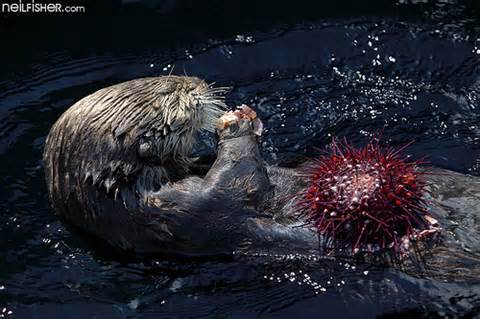“Atmospheric carbon dioxide (CO₂) concentrations have increased by approximately 40% since the start of the Industrial Revolution” (Wilmers et al. 2012). This increase in atmospheric CO₂ is a leading cause and contributor to Earth’s climate change with effects such as: “measurable global heat retention and elevated atmospheric temperatures, partial melting of the polar ice caps, ocean acidification, and a host of other impacts on Earth’s environments” (Wilmers et al. 2012). Earth’s ecosystems are combating this climate change by helping reduce the concentration of CO₂ and “sequestering C” (Carbon) in the atmosphere through “photosynthesis” (Wilmers et al. 2012). “Kelp forests are among the most productive ecosystems in the world” (Clasen and Shurin 2015). Within an ecosystem, “Kelp forests provide both nutrition and habitat structure” (Markel and Shurin 2015). Kelp forests are also very important when it comes to the topic of climate change. They have a “high rate of uptake of atmospheric CO₂” allowing them to absorb the Carbon in the atmosphere (Wilmers et al. 2012).
In every ecosystem there are “trophic level[s]” where predator and prey are placed (Markel and Shurin 2015). These predator-prey relationships can lead to “cascading effects” within an ecosystem (Markel and Shurin 2015). Climate change is involved in “the trophic cascade involving sea otters, urchins, and kelp” (Clasen and Shurin 2015). “Sea otters have a positive indirect effect on kelp biomass by preying on sea urchins, kelp grazer” (Wilmers et al. 2012). Sea urchins can cause “urchin barrens where kelp are sparse or absent,” when in the absence of sea otters, their predators (Clasen and Shurin 2015). This is due to the circumstance that their “abundance and consumption rates increase dramatically” without a predator to reduce their population and/or keep them from devastating kelp ecosystems (Clasen and Shurin 2015). “This results in a strong positive relationship between the abundance of sea otters and the abundance of kelp” (Wilmers et al. 2012). An abundance of kelp and a thriving kelp forest ecosystem is very effective in the “uptake of atmospheric CO₂” and thus the combat against climate change (Wilmers et al. 2012). As a result, sea otters indirectly help the kelp combat climate control by being an “apex predator” within kelp forest ecosystems (Markel and Shurin 2015).
Refrences
Clasen JL, Shurin JB. 2015. Kelp forests size alters microbial community structure and function on Vancouver Island, Canada. Ecology. 2015, Vol. 96 Issue 3, p862-872. 11p. DOI:10.1890/13-2147.1.sm.
Markel RW, Shurin JB. 2015. Indirect effects of sea otters on rockfish (Sebastes spp.) in giant kelp forests. Ecology, 96: 2877–2890. DOI:10.1890/14-0492.1.
Wilmers CC, Estes JA, Edwards M, Laidre KL, Konar B. 2012. Do trophic cascades affect the storage and flux of atmospheric carbon? An analysis of sea otters and kelp forests. Frontiers in Ecology and the Environment, 10: 409–415. DOI:10.1890/110176.
Header photo from https://scicomstation.wordpress.com/2015/04/07/sea-otters-the-cuddly-key-to-marine-ecosystem-health/
In text photo from http://seaotters.com/2013/05/why-are-sea-otters-important-no-sea-otters-no-kelp-forests/

